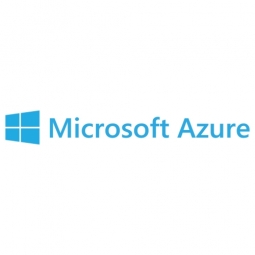Technology Category
- Infrastructure as a Service (IaaS) - Cloud Computing
- Platform as a Service (PaaS) - Application Development Platforms
Applicable Industries
- Cement
- National Security & Defense
Applicable Functions
- Product Research & Development
- Sales & Marketing
Use Cases
- Personnel Tracking & Monitoring
- Tamper Detection
Services
- Cloud Planning, Design & Implementation Services
- System Integration
About The Customer
Anthony Nolan is a UK-based nonprofit organization that collaborates with other stem cell donor registers worldwide to match people with blood cancer with donors whose stem cells can save lives. The organization was founded by Shirley Nolan in honor of her son and matches patients with volunteers willing to donate stem cells. Anthony Nolan also leads research into stem cell transplantation, advocates for blood cancer patients and their families, helps patients navigate treatment, and expands its stem cell register so more people can access critical transplants. The organization operates on the philosophy of 'continuous improvement on all our technology platforms'.
The Challenge
Anthony Nolan, a UK-based nonprofit, collaborates with other stem cell donor registers worldwide to match people with blood cancer with donors whose stem cells can save lives. The organization was facing challenges with its legacy technology. Information about potential donors and recipients was kept on a different system than that of volunteers, financial supporters, and others. This lack of a single view made it difficult for the transplant, marketing, and fundraising teams to find the details to cultivate the most meaningful relationships possible. The nonprofit also used a 22-year-old, email-based system to communicate with more than 100 other registries around the world. This legacy platform was inefficient and resulted in hundreds of failed messages a day, which someone had to check and process. This took valuable hours in a time-sensitive matching process.
The Solution
Anthony Nolan partnered with Formus Pro to revamp its stem cell donor management systems. Formus Pro built an Azure link to connect the separate systems, creating a 'single supporter view'. This allowed users to see the relevant information stored in the other system without switching back and forth between platforms. The databases sync in real time and prevent duplicate entries for people involved in multiple areas of the nonprofit’s work. Formus Pro also built two layers of permissions to ensure staff see only the information they need to do their job. To find donor matches more efficiently, Formus Pro built an Azure link that layered on top of the decades-old email-based system called EMDIS. This layer uses custom APIs to more securely analyze, process, and sort messages into queues. An Azure function processes these messages hourly, including Anthony Nolan’s own requests for potential matches. This automation and bypassing the previous mistake-prone process saved time and hassle.
Operational Impact
Quantitative Benefit

Case Study missing?
Start adding your own!
Register with your work email and create a new case study profile for your business.
Related Case Studies.

Case Study
System 800xA at Indian Cement Plants
Chettinad Cement recognized that further efficiencies could be achieved in its cement manufacturing process. It looked to investing in comprehensive operational and control technologies to manage and derive productivity and energy efficiency gains from the assets on Line 2, their second plant in India.

Case Study
Data Capture for Afghanistan Forces
Electronic equipments on the field of Afghanistan provided information on the status of the vehicle and to identify potential threats surrounding it to the British Force. The monitoring and interpretation of this data requires robust and sophisticated digitization for data capture and communication.

Case Study
Digital Transformation of Atlanta Grout & Tile: An IoT Case Study
Atlanta Grout & Tile, a Tile, Stone & Grout restoration company based in Woodstock, Georgia, was facing challenges with its traditional business model. Despite steady growth over the years, the company was falling behind the web revolution and missing out on the opportunity to tap into a new consumer base. They were using independent software from different vendors for each of their department information and workforce management. This resulted in a lot of manual work on excel and the need to export/import data between different systems. This not only increased overhead costs but also slowed down their response to clients. The company also had to prepare numerous reports manually and lacked access to customer trends for effective business decision-making.
Case Study
Enhancing Security and Compliance in Remitly's Global Money Transfer Service with Fastly
Remitly, an online remittance service, was faced with the challenge of securing its proprietary global transfer network. The company needed a security solution that could meet PCI requirements and protect customers' sensitive transactions through its mobile application. The solution had to be capable of defending against new and emerging attack types without impacting performance. Remitly also had to deal with irregular traffic patterns, such as a sudden spike in account transfers from a small network segment on the Pacific coastline of South America. The company needed to determine in real time whether such traffic indicated an attack or valid requests. A traditional web application firewall (WAF) would not be able to distinguish this traffic, potentially leading to customer frustration if the IP was blacklisted.

Case Study
Major Aerospace Company Automates Asset Management
The O&M division of an aerospace and global security company was using spreadsheets to manually track more than 3,000 assets assigned to students and staff. Maintaining audit trails for this high volume of equipment became increasingly time-consuming and challenging. The chore involved knowing precisely what equipment was on hand, what had been issued, its location and the name of the custodial owner of each item. Every aspect of this task was carried owner of each item. Every aspect of this task was carried out by individuals with spreadsheets. Manually documenting the full lifecycle of each asset added to the burden. This included tracking maintenance requirements and records, incidents and damages, repairs, calibrations, depreciation, and end-of-life data.








